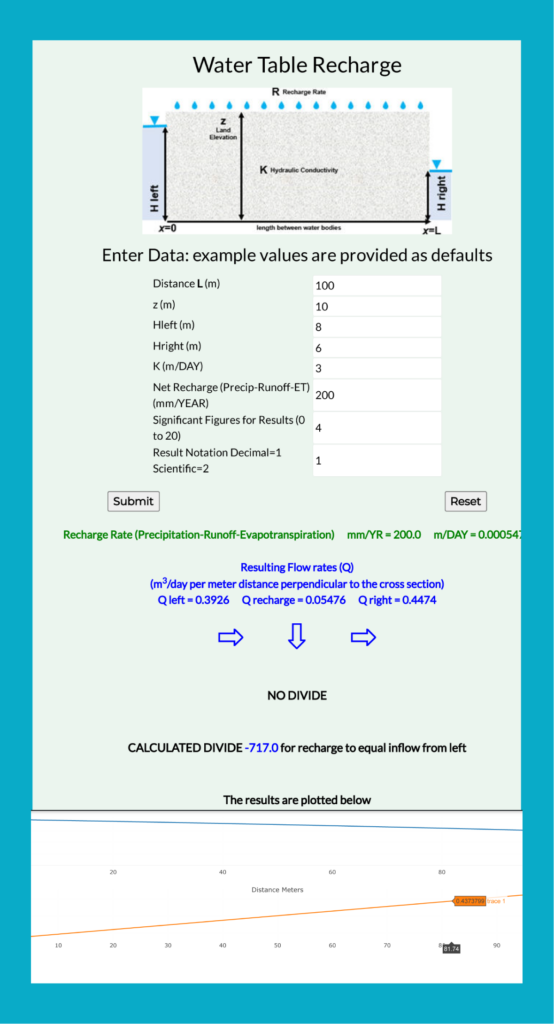Important Note: This interactive tool is designed for educational use.
A classic example of a steady-state analytical model is recharge to a strip of land between two fully penetrating bodies of water. It simplifies flow in an unconfined aquifer by assuming the recharge is instantaneously and evenly distributed vertically throughout the aquifer and flow is horizontal within the aquifer.
- The top boundary has steady, uniform recharge.
- The two vertical boundaries are constant head. The water levels can be any height, but it is useful to remember that they represent fully penetrating water bodies so should fall within reasonable limits. The water level can be higher on the left or the right. If the water levels are very different and the distance between them is short, then the assumption of of essemtially horizontal is not as reasonable. The further one deviates from the fundamental assumptions, the less accurate the model results.
- The bottom is a no-flow boundary.
Given a value of recharge, hydraulic conductivity, head in each water body, and the distance between the water bodies, the model describes steady, one-dimensional, flow in a homogeneous porous material. Because the model is one-dimensional and steady state, it solves for:
- head at any distance, x, from the left boundary, and
- flow rate at any distance, x, from the left boundary.
The WTR software was created by Eileen Poeter in 2024. A discussion of water table recharge is provided in Box 6 of the Groundwater Project PDF book Hydrogeologic Properties of Earth Materials and Principles of Groundwater Flow or it can be read on line at this link Box 6 “Adding Recharge to the Unconfined Aquifer System”. Videos demonstrating how to use the tool and an example application are included on the tool menu.
Citation: Poeter, E. (2024). Flow Systems: WTR Water Table Recharge. An Interactive Educational Tool of The Groundwater Project, Guelph, Ontario, Canada.

